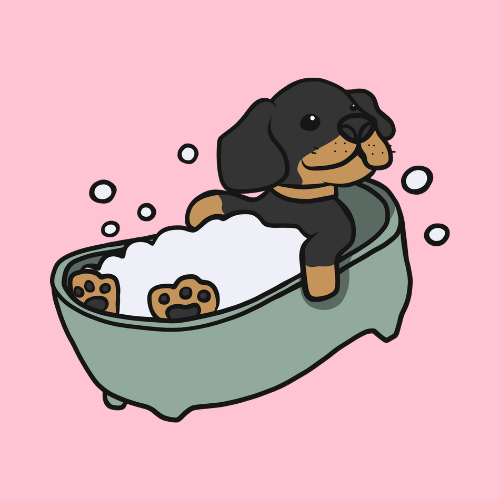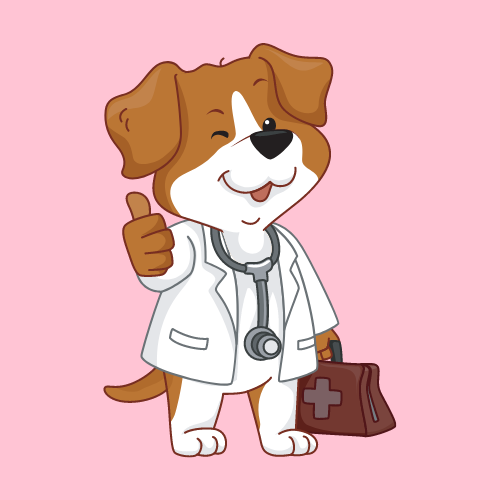Understanding the Process and Purpose of a Dog Enema
A dog enema is a simple procedure with the purpose to relieve constipation in dogs. The procedure is usually done by a qualified veterinarian and involves introducing a liquid solution into the rectum and colon of a dog to help relieve blockages and flush out the intestines. This procedure is sometimes done before medical procedures and other times is done purely to help with constipation.

The type of liquid or solution used in an enema varies on the situation but is generally a mild soap or saline solution. The enema is delivered using a lubricated nozzle which is inserted directly into the dog’s rectum. The solution is administered into the dog’s rectum where it remains for a short period of time before being expelled. The purpose behind dog enemas is to soften and loosen blockages caused by fecal matter in the colon making it easier for your dog to do its daily business.
It’s important to remember that enemas should never be done at home and should only be done by qualified veterinarians who are experienced with the procedure.
Common Symptoms to Watch for After a Dog Enema
There are multiple common symptoms associated with enemas that come after the procedure that you should look out for. The main symptom which is usually the most unpleasant is diarrhea for obvious reasons this can be unpleasant for not only your dog but also for you as the owner and your home. Other common symptoms include vomiting, abdominal pain, and dehydration.

If you find that your dog is experiencing any of these symptoms and you are worried we suggest contacting your local veterinarian as soon as possible just to be safe. Sometimes it’s worth doing so just for the peace of mind it gives knowing that your dog is in good health. More likely than not these symptoms are part of the normal recovery process but on rare occasions, they may indicate a more serious problem.
Some dogs have experienced bowel incontinence or even fecal incontinence after having an enema which is why it’s imperative to have close monitoring. In general, the best practices are to monitor your dog’s behavior and appetite to check for signs of pain and discomfort.
How to Care For Your Dog Following an Enema
Caring for your dog after any medical treatment is an essential part of a successful recovery. Once the procedure has been completed try to keep your dog calm. Do not over-excite them by stimulating them with toys or long walks. It’s important that their body has time to rest and recover, I know it’s easier said than done but try to take steps to keep your dog as calm as possible.
Although it might not be the most pleasant of experiences you should pay extra attention to the quality of your dog’s bowel movements to ensure they as passing their stools correctly and that the stools are not of an unusual consistency.
Providing a low-fiber diet for a short time after the procedure is also usually recommended. You will usually get recommendations on what to feed your dog from your vet following an enema. This diet is to be followed strictly with no room for treats or deviations. Finally, the most important thing possible is to provide your dog with ample fresh water at all times and encourage your dog to drink frequently, especially if your dog is suffering from diarrhea which is one of the most common causes of dehydration.

Additionally, try to keep your dog as clean and hygienic as possible to prevent the growth of bacteria or any infections, especially after bowel movements. You should take steps to clean the area around your dog’s anus with soapy warm water and dry the area thoroughly.
When Should You Seek Veterinary Assistance After a Dog Enema
We advise that you seek veterinary assistance after a dog enema if you notice any of the following symptoms or complications:
- Diarrhea and Vomiting that shows no signs of stopping
- Bloody stools
- Signs and symptoms associated with dehydration
- Lack of appetite and lethargy
- Signs of intense distress and discomfort
Frequently Asked Questions: Regarding Enema Aftermath for Dogs
Q: How Long Does It Usually Take for a Dog to Recover From an Enema?
The time it takes for a dog to recover after an enema can vary depending on the health of the individual dog and the reason why the dog had the enema in the first place. Usually, the dog will start to pass stools within a couple of hours after the procedure. However, the total time for a dog to fully recover and get back to its usual self can range from a couple of days to a week at most.
Q: Can a Dog Enema Be Harmful if Done Incorrectly?
Dog enemas are rarely done incorrectly, but there is always a small possibility that it can happen. Ensure you use a qualified vet with plenty of experience to prevent issues with incorrectly administering an enema. An enema that has been done incorrectly can cause damage to the rectum or colon which can lead to infections or other complications.
Q: Can Enemas Be Used as a Long-Term Solution for Constipation in Dogs?
Enemas absolutely should not be used as long-term solutions for constipation in dogs. Enemas for dogs have usually used a short-term solution to a problem that takes a relatively long time to materialize.
Q: What Should I Do if My Dog Is Not Passing Stool After an Enema?
If you find that after your dog’s enema, your dog is still struggling to pass a stool then its important to contact your veterinarian as soon as possible. There might still be an underlying medical condition causing the issue. Your veterinarian will be able to recommend additional treatment.
Q: Is It Normal for a Dog to Experience Some Discomfort or Pain After an Enema?
Pain and discomfort are not uncommon as the procedure is known to cause some mild irritation to the rectum and colon. However, if your dog seems to be displaying signs of severe pain and distress it’s imperative to contact your vet as soon as possible.
Preparing for a Dog Enema: What to Expect Before, During, and After the Procedure
Preparing for a dog enema involves understanding the procedure and what to expect before, during, and after the procedure.
Before the procedure: It’s likely that your veterinarian will explain the reasons for the enema and the procedure itself. It’s important to voice your concerns about the procedure including the overall pros and cons. You will also get an explanation about how to prepare your dog and instructions you should take such as the fasting process before the procedure.
During the procedure: The procedure will take place at your veterinarian clinic, and your dog will be sedated or under general anesthesia. The procedure will take place as described in the opening paragraphs. Bear in mind each procedure is different depending on the size and weight of the dog.

After the procedure: After the procedure has been completed your dog will be monitored briefly until they’ve recovered from the sedation. You will receive instructions on how to care for your dog at home including advice and recommendations about specific diets. You should continue to monitor your dog yourself to ensure there are no unusual symptoms. Its all goes well your dog should recover in a couple of days at most up to a week.
- Why Does My Dog’s Ear Make a Crackling Noise [Guide]
- Why Do Dogs Love Lamb Chop Toys?
- I Accidentally Bought Puppy Food for an Adult Dog [Guide]
In Conclusion: What to Expect After a Dog Enema
A dog enema is used typically to relieve constipation or prepare for a medical procedure. The more you understand about the procedure and how to care for your dog in its recovery phase the better. After the enema, your dog is most likely going to be in some discomfort but this discomfort should pass within a couple of days. If you notice your dog is displaying unusual symptoms it’s best to ask a vet for advice just to be safe.
Please remember that an enema is a procedure that should only be used under the direction of a veterinarian and should never be done at home. If your dog is going through this process now we wish that they have a speedy recovery and get well soon.

Doctor of Veterinary Medicine (D.V.M.) at Nation Taiwan University,Master of Science (M.S.) in Biomedical Engineering at National Taiwan University of Science and Technology




